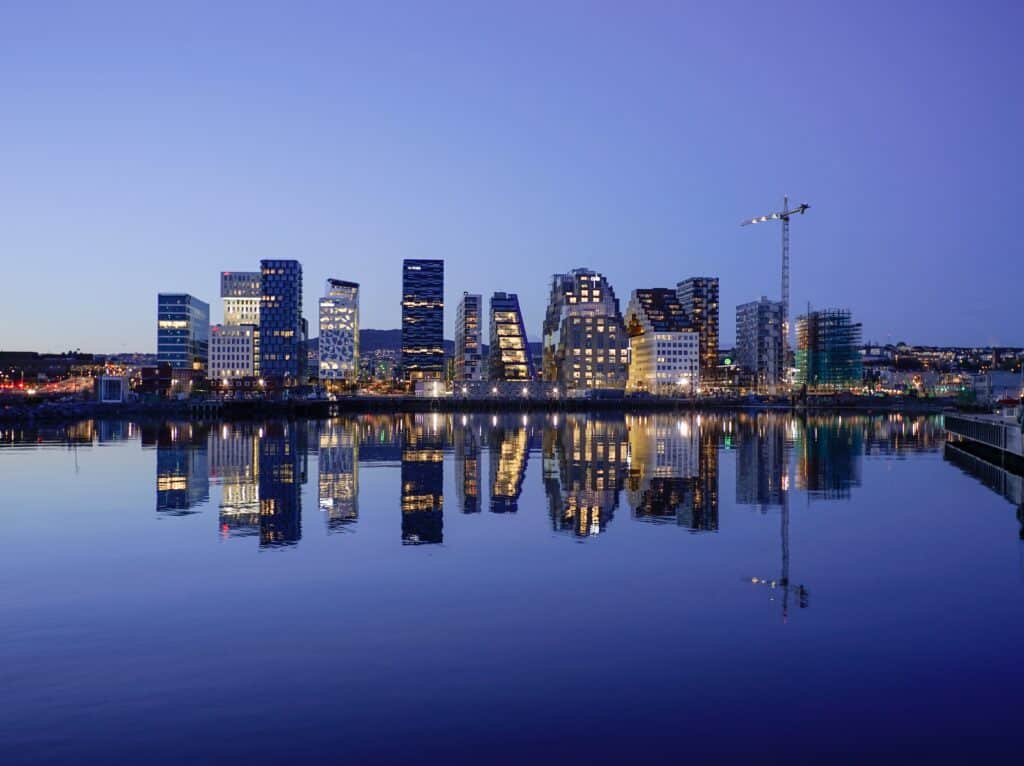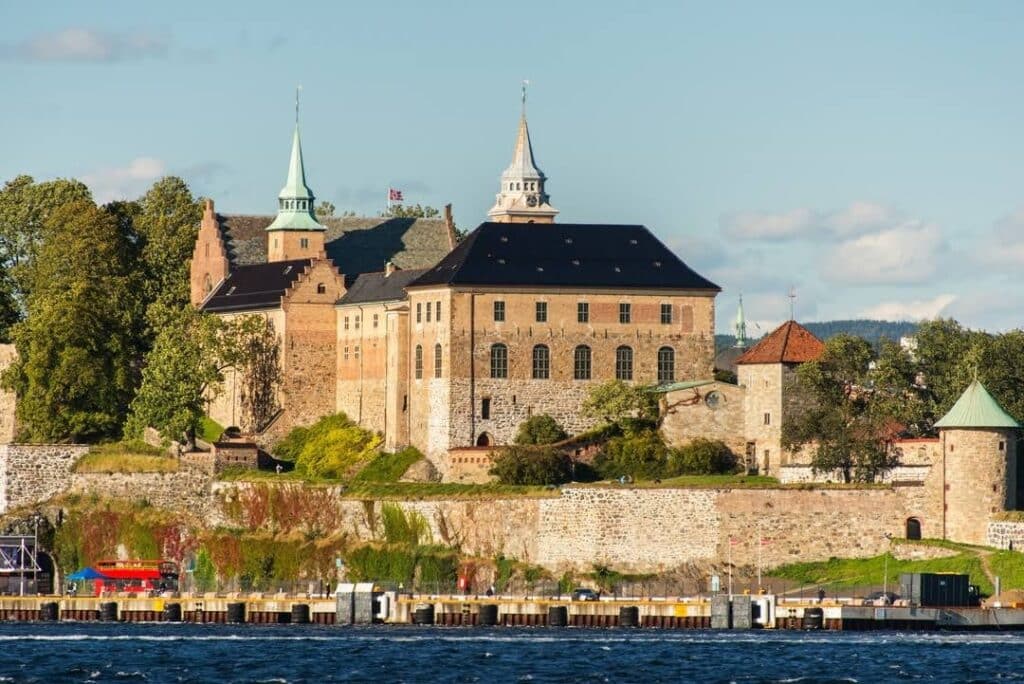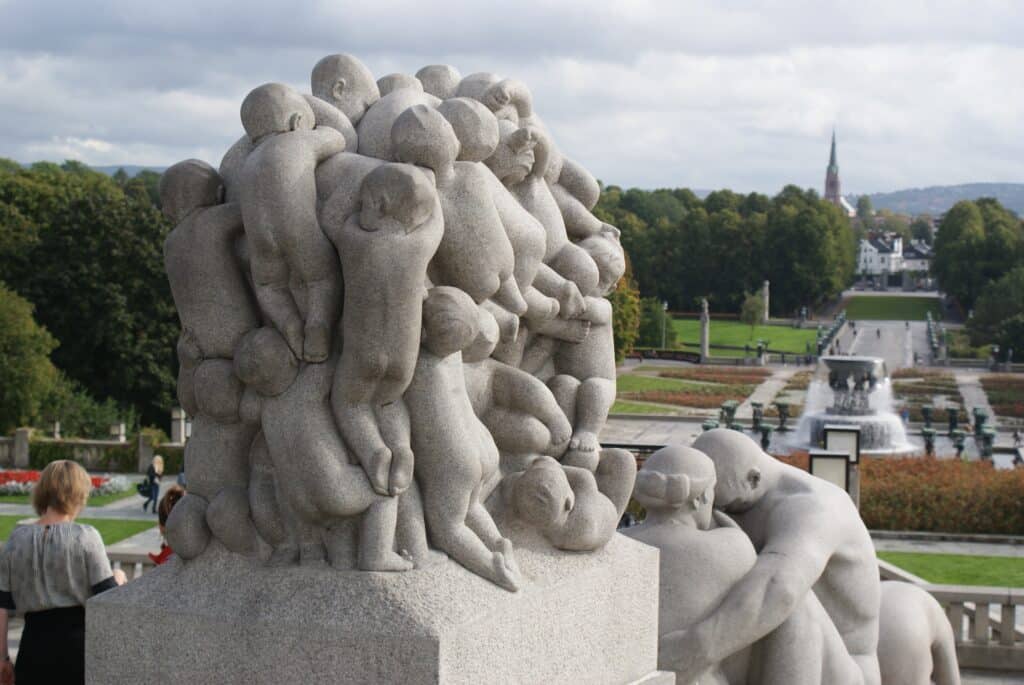Oslo, the capital of Norway, is a city that seamlessly blends its rich history with modern vitality. It is a city that goes beyond its famous fjords and Northern Lights and embraces sustainability as a core value. In this article, we will take you on a journey through the top attractions in Oslo that showcase its heritage and commitment to a sustainable future. Late spring to early autumn (May to September) is the best time to visit Oslo for sightseeing, as the weather is pleasant. However, winters in Norway have their charm, with snow-laden landscapes and winter activities.

One of the most iconic landmarks in Oslo is the Akershus Fortress, located on the banks of the Oslo fjord. This historical fortress tells stories of Viking dominance and royal residencies. Walking through its corridors, you can almost hear the echoes of past battles and historic feats. The fortress is not just a castle; it is a living timeline of Oslo’s history.

Vigeland Park is another must-see attraction in Oslo. This sprawling park is home to over 200 sculptures created by Gustav Vigeland. The most famous sculpture in the park is “The Monolith,” which depicts intertwined human forms reaching for the sky. It is a thought-provoking piece that invites contemplation on the intricacies of life’s dance.

The Oslo Opera House is a stunning architectural marvel that stands out with its gleaming white slopes against the blue waters of the Bjørvika. It is not just a place to enjoy operas; visitors can also walk on its marble roofs and enjoy panoramic views of Oslo. The opera house is a testament to Oslo’s commitment to environmental sustainability, as it was built with sustainable practices in mind.

For history enthusiasts, Oslo offers a range of museums to explore. The Viking Ship Museum takes you back in time to the era of the Vikings, showcasing ships and artifacts that braved the vast oceans. Most visitors spend 1-2 hours at the Viking Ship Museum, but if you have a deep interest in Viking history, you may want to allocate more time
The Munch Museum houses a vast collection of works by Edvard Munch, including his famous painting, “The Scream.” The Norwegian Folk Museum is not just an open-air museum; it is a time capsule that brings traditional Norwegian houses and Sami culture to life.
Karl Johans Gate is the bustling nerve center of Oslo, where you can experience the city’s contemporary heartbeat. From the grandeur of the Royal Palace to the aroma of local delicacies, every step on this street offers a mosaic of experiences. Street musicians serenade passersby, artists paint on the sidewalks, and history unfolds before your eyes.
Ekebergparken is a surprising attraction in Oslo that combines art with nature. This sculpture park offers panoramic views of the city and features art installations set amidst century-old trees. Artists like Salvador Dalí and Jenny Holzer have contributed their works to this unique park, where bronze meets bark and art converses with nature.
The Royal Palace is a majestic sight set against a green backdrop. It is not only the official residence of the reigning monarch but also a symbol of Norwegian continuity. Visitors can witness the changing of the guards, a spectacle of orchestrated precision. Visiting the interiors of the Royal Palace is possible during the summer months with guided tours. It is advisable to check the palace’s official website for timings and any schedule changes.
For adrenaline seekers and history buffs, the Holmenkollen Ski Museum & Tower is a must-visit. It houses the world’s oldest ski museum, tracing over 4,000 years of skiing history. The tower offers mesmerizing views of the Oslo fjord and allows you to experience the thrill of ski jumping.
The Kon-Tiki Museum is a testament to human endurance and passion. It chronicles Thor Heyerdahl’s incredible sea expeditions on primitive vessels. The original Kon-Tiki raft, which sailed from South America to the Polynesian islands, stands as a symbol of audacious dreams. The Kon-Tiki Museum is suitable for all ages, and children especially find the tales of sea expeditions intriguing.
Art lovers should not miss the National Gallery and the Astrup Fearnley Museum of Modern Art. The National Gallery houses a vast collection of art, including works by Edvard Munch. The Astrup Fearnley Museum showcases contemporary art from renowned artists like Damien Hirst and Jeff Koons.
The Oslo Botanical Garden is a green oasis in the heart of the city. It offers a symphony of flora, from medicinal plants to an Alpine garden. It is a perfect place to take a breather amidst your city explorations. The Oslo Botanical Garden is free for all visitors, but certain events or exhibitions inside the garden may have an entrance fee.
Beyond the famous landmarks, Oslo has hidden gems waiting to be discovered. Secret garden cafes serving organic delights and boutiques championing local artisans can be found in every nook and cranny. The Grünerløkka district, with its bohemian ambiance, indie stores, and murals, is a favorite haunt for many.
Oslo’s commitment to eco-travel is evident in its green transport initiatives. Trams and electric buses make it easy to navigate the city sustainably. The city’s dedication to sustainability shows that sustainable travel is not a challenge but a choice. The Oslo Pass provides unlimited travel and free entrance to many attractions. Oslo promotes eco-tourism with initiatives like city bikes and electric buses, making it easy to explore the city in an eco-friendly way. Many attractions are within walking distance from each other, allowing visitors to enjoy Oslo on foot.
Oslo captivated us with its rich tales and multifaceted charm. From ancient ships to modern art, from majestic palaces to serene gardens, it offers a world of experiences. Are you ready for your own Norwegian adventure? Check out our 10-day eco-friendly itinerary in Norway to begin your journey. Safe travels!




